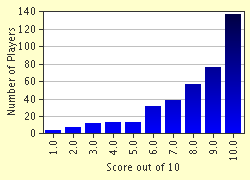Quiz Answer Key and Fun Facts
1. Fanum House, 47 Leicester Square, WC2, is a fairly undistinguished twentieth-century building. However, a blue plaque here records the fact that an earlier house on the site was the home of one of Britain's most famous portrait painters. Born in Devon in 1723, he helped to found the Royal Academy of Art, and was its first President. Who is he?
2. Visitors to the "Proms" concerts at the Royal Albert Hall may not realise that one of its most famous names lived practically next door, in a flat in Albert Hall Mansions. This conductor, affectionately nick-named "Flash Harry" because of his flamboyant style, was the mainstay of the Proms from 1947 until shortly before his death in 1967. What is his name?
3. Chester House, in Clarendon Place, Bayswater W2, has the unusual distinction of being designed by the architect who subsequently lived in it. This man, whose grandfather shared the same profession, was born in 1880 and lived in this house from 1926 until his death in 1960. He was also the architect of Liverpool's enormous Anglican Cathedral, and oversaw the repair of the bomb-damaged House of Commons after the Second World War. Who is he?
4. 39, Montagu Square, Marylebone, was the address of this famous Victorian novelist from 1873 until his death in 1882. His most famous works are the "Barsetshire" series of novels, which include "The Warden" and "Barchester Towers", although the later "Palliser" sequence, set in the London political world, is claimed by some to be a greater achievement. Can you name him?
5. A blue plaque at 23 Tedworth Square, Chelsea SW3, marks the residence here of a famous American writer between 1896 and 1897. If I tell you that he wrote "The Adventures of Huckleberry Finn" and "The Adventures of Tom Sawyer", you should have no difficulty in identifying him. Who is he?
6. Another of the many blue plaques in the borough of Kensington is at 50 Campden Hill Square. It states that a "Christian philosopher and teacher lived here 1907-1939". The lady in question moved here following her marriage to Herbert Moore, and it was while living here that she wrote her most famous work, "Mysticism" (1911). What is her name?
7. A blue plaque at 10 Hanover Terrace, Regent's Park, marks the residence here of one of England's finest composers. Born in 1872, among his works are nine symphonies, including "A Sea Symphony" and "A London Symphony". He lived here from 1953 until his death in 1958. Who is he?
8. Britain's longest-serving Prime Minister moved to 5 Arlington Street, St James's in 1742, the year that he was succeeded as PM by Spenser Compton. He lived there until his death in 1745. Can you name him?
9. 23 Fitzroy Road, Regent's Park, was the home of a famous Irish poet and dramatist from 1867-1873. Among his most famous works are the collections "Responsibilities" (1916) and "The Wild Swans at Coole" (1919). He did not produce any significant works while living at this address, however, since he moved here at the age of three and left when he was eight. Who is he?
10. Out in the obscure southeastern suburb of Upper Norwood, SE19, is the Queen's Hotel, at 122 Church Street. Here a blue plaque records that for some twelve months, between 1898 to 1899, the building was the residence of a famous French novelist - author of "Germinal" and "Nana" - who had fled from his homeland in 1898 to escape imprisonment. What is his name?
Source: Author
stedman
This quiz was reviewed by FunTrivia editor
DakotaNorth before going online.
Any errors found in FunTrivia content are routinely corrected through our feedback system.

